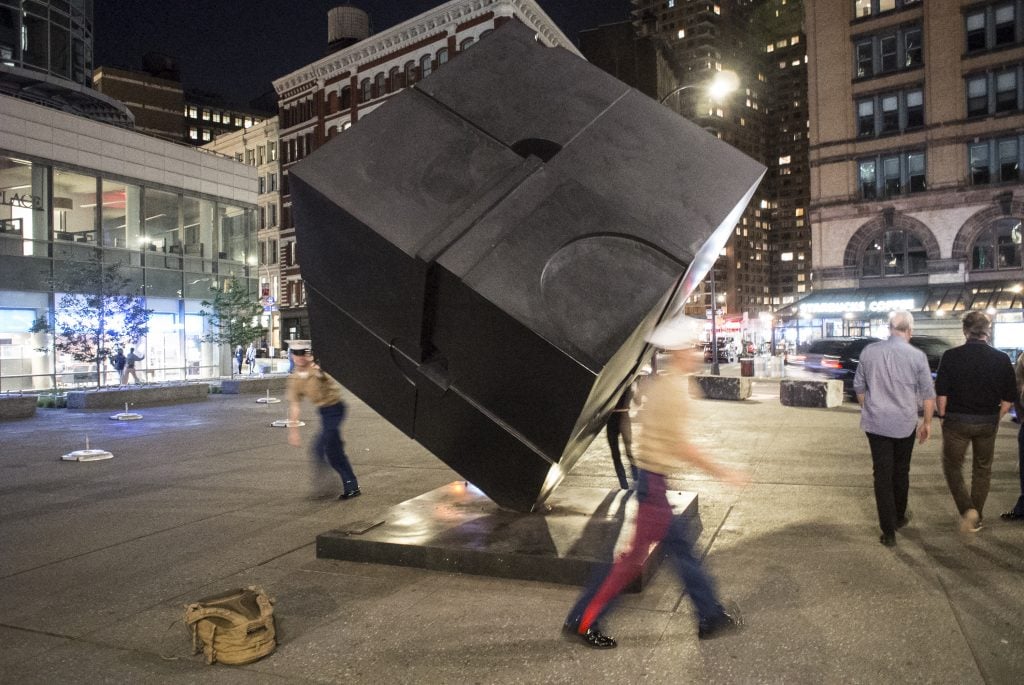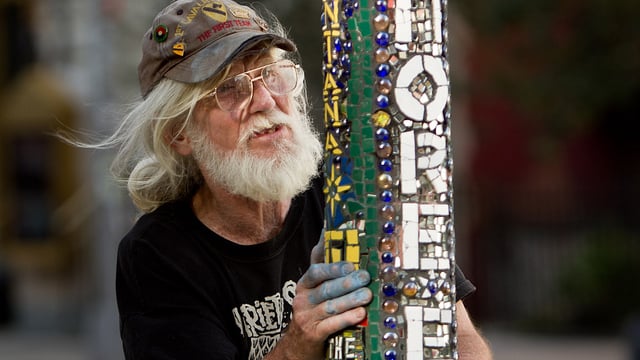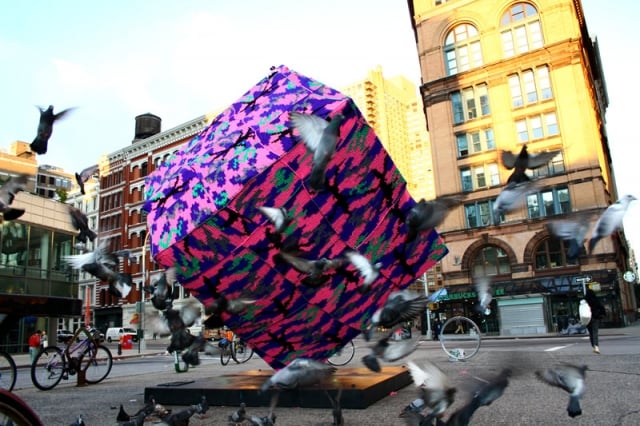Art World
The Beloved Astor Place Cube Finally Returns!
It has spent over a year and a half in storage.

It has spent over a year and a half in storage.

Sarah Cascone

As work on the redesign of New York’s Astor Place nears completion, the Astor Place Cube, one of the city’s iconic public sculptures, will be returning to its place of pride after some 20 months in storage, reports Gothamist.
The rotating statue, officially called the Alamo, is the work of Bernard “Tony” Rosenthal, and has been a fixture of the Astor Place traffic island since 1967. Now, thanks to the Astor Place Reconstruction Project, the Cube will instead be the focal point of a new, permanent pedestrian plaza.

A rendering of the new Astor Place. Courtesy of the NYC Dept. of Design & Construction.
In October 2014, the Alamo was boarded up in plywood in preparation for its removal for restoration and repainting during the construction. According to an Astor Place Construction Bulletin shared by EV Grieve, the Cor-Ten steel statue will be reinstalled on June 22 between 7:00 a.m. and 6:00 p.m., provided the weather cooperates.
Also affected by the Astor Place project were mosaic lampposts created by Jim “Mosaic Man” Powers. The artist preemptively removed several of his own pieces in advance of the construction project. Last week, Bowery Boogie reported that the Mosaic Trail would be restored in August, in a three-day celebration with a dedication ceremony and public mosaic-making workshops.

Jim “Mosaic Man” Power with one of his East Village mosaics. Photo by Gregory Tran, Creative Commons Attribution-NonCommercial-NoDerivs 2.0 Generic.
Weighing 1,800 pounds, Alamo was originally planned as a six-month installation. The spinning sculpture was so popular that the New York City Department of Cultural Affairs agreed to make it a permanent public artwork.
The iconic sculpture has also served as a point of inspiration for other artists, such as yarn-bombing street artist Olek, who crocheted a colorful covering for the piece in 2011. (It was promptly removed by the city.) Two years later, a film about an artist who was living inside the 64-square-foot artwork turned out to be a marketing stunt, to many readers’ dismay.

Bernard Rosenthal, Alamo (1967) in 2011, when it was yarn-bombed by Olek in 2011. Courtesy Olek.
Leading up to the Cube’s return, the Village Alliance is hosting “Creativity Cubed,” a four-day celebration of the local landmark that includes crafting workshops and the chance for New Yorkers to share their favorite Alamo memories.